

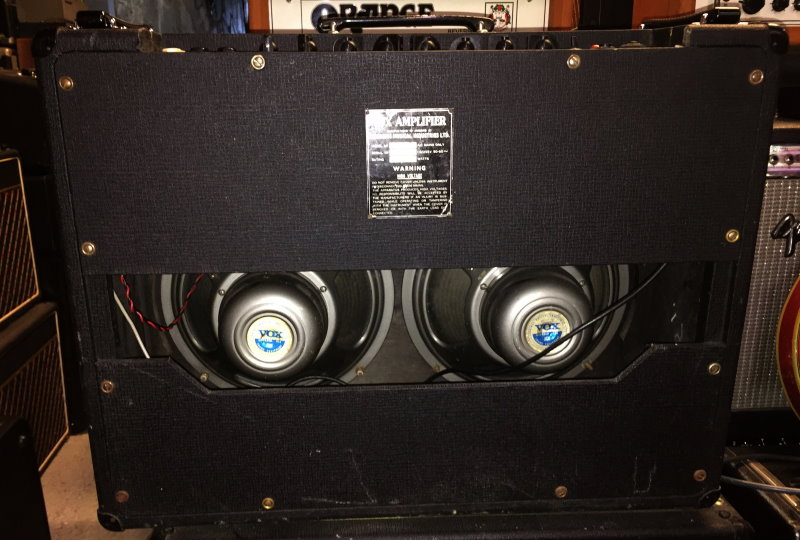
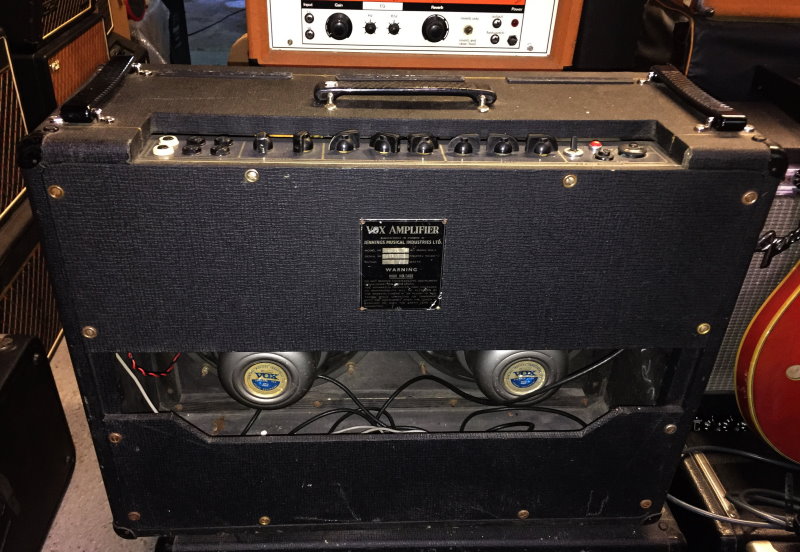
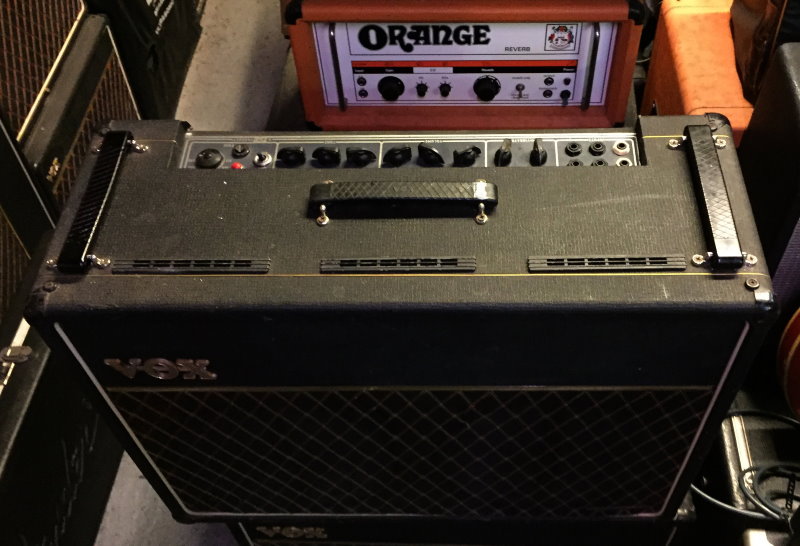

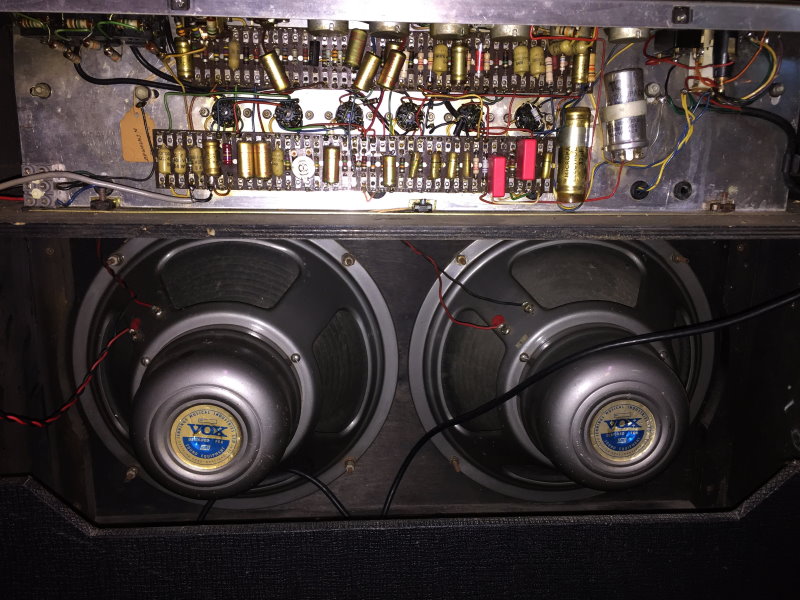
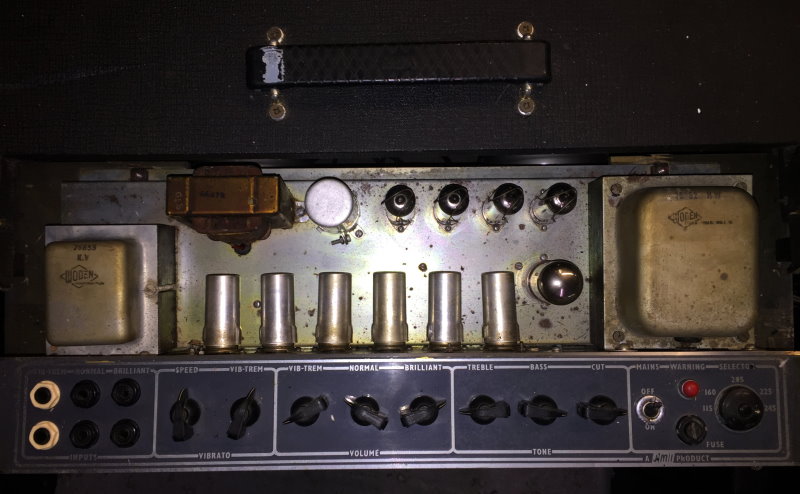
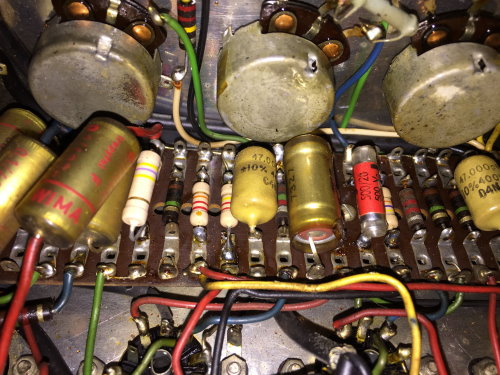

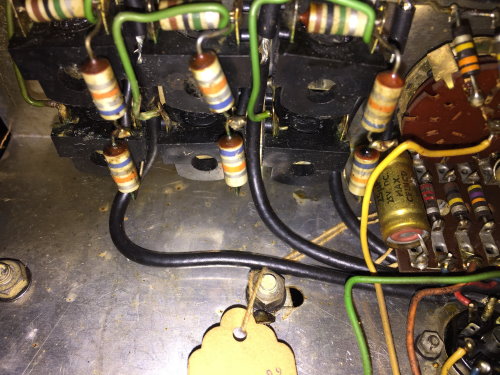
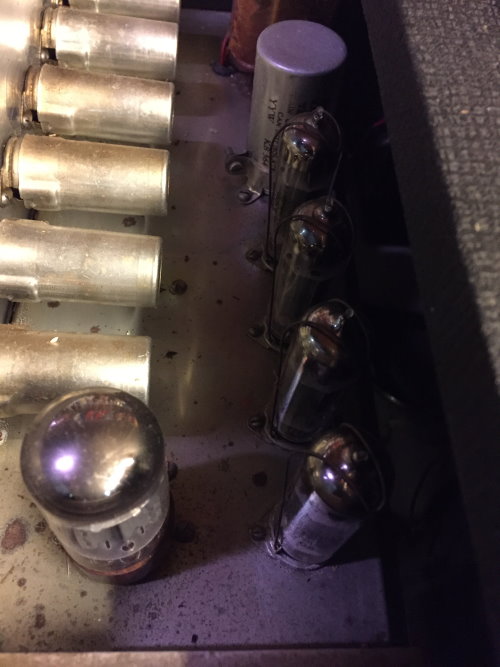

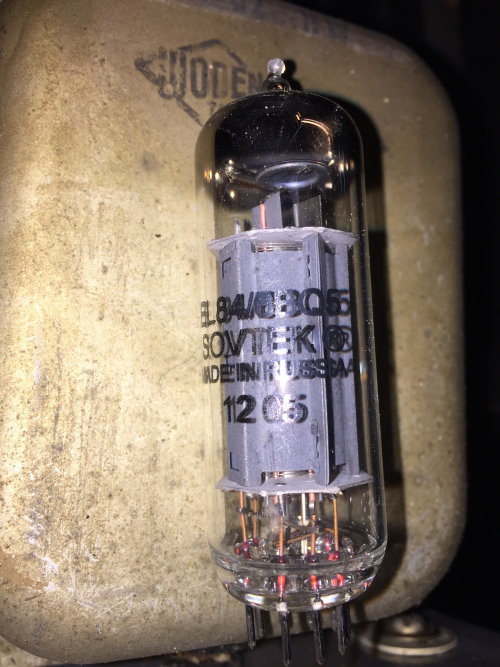
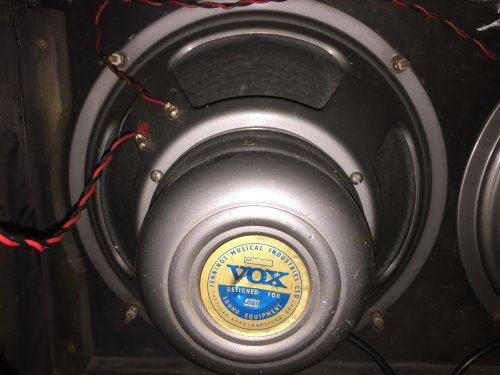
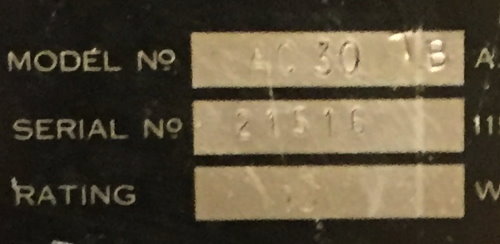
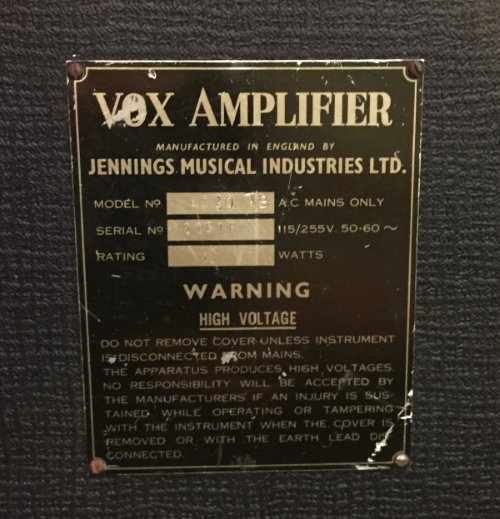


1965 VOX AC30 Top Bost JMI Product, 2x12" Grey Bullet, Wooden Transf. Comes with Orig.Vox footswitch (Code AM105)
1965 Vox AC30 JMI Top Boost Vibrato in very nice conditions, all original, matched tube, 2x12" Silver Bullet, 4 Sovtek EL84 Matched with a rectifier tube GZ-34 Variable Voltage Selector Ready to play
The AC30
Originally conceptualized as a “twin”
AC15, the AC30 retained several important circuit elements of its little brother:
an EF86 in the front end, EL84 power tubes running in cathode bias (this time,
four of them), and no negative feedback in the output stage. The use of negative
feedback in amplifier design was a technique developed specifically to suppress
harmonics generated by the power stage, and the sound of a Vox amp depended on
not suppressing those harmonics. With Denney and Underdown in charge of the
internal aspects of the new amp (which included a larger 30-watt output
transformer, and an upgraded power transformer, along with a GZ34 rectifier
tube), and Jennings taking care of the cosmetics, the new AC30/4 (which denoted
its four inputs—two for the Normal channel, and two for the Vib-Trem channel)
rolled out in 1960. The first AC30s had a single Goodmans Audiom 60 12" speaker
or a Celestion G-12, but neither configuration delivered the desired results for
guitar, and the amp was refitted with two Celestion G-12s and later, Celestion
T.530 speakers. The first AC30s delivered to the Shadows would likely have been
equipped with either of these speakers.
With England’s “beat boom” in full
swing, and the Shadows leading the charge with their 1960 hit, “Apache” (which
was probably recorded with an AC15), the AC30 soon became the most sought-after
guitar amp in Britain. The AC30 established JMI as the preeminent musical
equipment manufacturer in the U.K., and it gave Tom Jennings the runway he
needed to launch a vast array of new products that would keep Vox an industry
leader for the next several years.
Top Boost
The AC30 continued to evolve with the
introduction of the AC30/6 in 1960, which added a Brilliant channel to the
standard complement of Normal and Vib-Trem channels, increasing the number of
inputs to six. This change also involved swapping the original EF86 pentode tube
to an ECC83 (12AX7) twin triode. It has been said that the AC30/6 lacked some of
the clarity of the original model, and that’s ostensibly why Vox responded with
its Top Boost “brilliance” modification in 1961. This comprised a plate of bent
aluminum gripping an extra 12AX7 tube along with Bass and Treble controls, which
was mounted into a square cutout on the back of the amp, and wired into the main
circuit. Initially, the Top Boost mod could be ordered separately, or be factory
installed on the AC30/6. In 1963, the extra circuitry was incorporated into the
chassis, and the Bass and Treble knobs were added to the control panel (the
add-on unit was still available, though).Despite its comparative simplicity most
customers didn't have the technical knowledge to fit the new circuit and
consequently the Top Boost, or 'Brilliance Unit' as it was officially named, was
fitted to the AC30 as standard from 1964
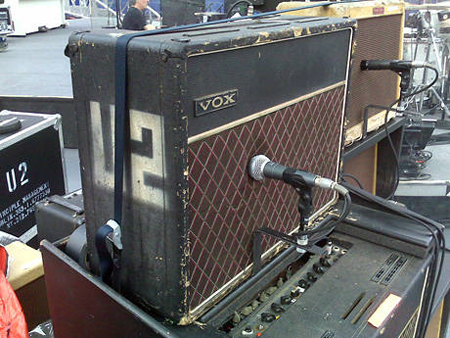
The Edge created a signature sound early on in his career with a Fender Stratocaster, Electro Harmonix Memory Man delay pedal and a VOX AC30 on albums such as WAR and The Unforgettable Fire. This winning combination has served him well from the early days all the way through recent records and live work. The Edge creates complex echo manipulations coupled with the airy chime of the Vox AC30. The Edge has used a massive catalog of guitars and multi FX units over the years, but the AC30 has remained a staple regardless of the other changes. These gear details coupled with his brilliant parts make U2’s catalog of songs distinguishable with just one note of the Edge’s guitar. Very few guitar players in history have created such a powerful and recognizable signature sound like The Edge.

Manfred Mann
VOX AC30 '65 This was the model used by THE SHADOWS for their greatest hits,and many guitarists admitted to being puzzled when their Fender guitars did not give exactly that result through their newly bought AC30s, which were mainly six-input model by mid-1961(The Vox Story)